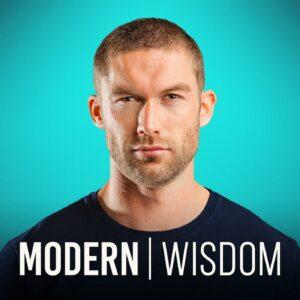Intro
In this episode of the Hidden Brain Podcast titled “The Path to Enough,” host Shankar Vedantam explores the concept of addiction and the delicate balance between pleasure and pain in our brains. Psychiatrist Anna Lemke shares her personal experience with addiction and how she found her path to recovery. The episode also delves into the role of motivation, self-binding techniques, and the importance of human connections in overcoming addictive behaviors.
Main Takeaways
The Pleasure-Pain Balance
- Our brains balance pain and pleasure on a seesaw and seek equilibrium or homeostasis.
- Pressing down on the pleasure side too much or too often can lead to a dopamine deficit and manifest as anxiety, irritability, and depression.
- The brain has an internal seesaw designed to keep things in balance, called homeostasis.
Addiction and Excessive Behaviors
- Anna Lemke, a psychiatrist at Stanford University, has treated patients with addictions to everyday activities taken to excess.
- Anna herself found herself in the grip of an addiction to romance novels and erotica, which she rationalized as a modern-day pride and prejudice.
- Anna realized her engagement with romance novels and erotica had something in common with the addictions she was treating in her patients.
- People want to escape themselves and be in a trance, which is a function of our narcissistic society and the availability of drugs.
- Even healthcare professionals can struggle with addictive behaviors.
The Power of Motivation and Self-Binding
- Motivational interviewing is a way of harnessing a patient’s own motivation to change their behavior.
- Putting our behavior into words and telling another person has a remarkable ability to penetrate our lack of awareness and enable our ability to change.
- Self-binding techniques can help control indulgences and create barriers between ourselves and our substance or behavior of choice.
The Role of Dopamine and Withdrawal
- Pressing on the pleasure side of the seesaw triggers a burst of dopamine, leading to a dopamine deficit over time.
- Abstaining from addictive behaviors for a period of time can help patients gain perspective on their addiction.
- Severe addictions may require medical supervision and support for withdrawal symptoms.
- Getting off of addictive chemicals is necessary to allow the brain to heal.
The Abundance Paradox and Human Connections
- Wealth and abundance were once linked to happiness, but now the abundance paradox is causing suffering in the wealthiest nations.
- Increasing rates of depression, anxiety, and suicide are rising fastest in the wealthiest nations and among teenagers who spend more time on the internet and consuming digital media.
- Oxytocin, the love hormone, can trigger dopamine in a healthy way through human connections.
- Groups like AA and NA are remarkable grassroots organizations that can help people with addiction through human relationships.
Summary
The Pleasure-Pain Balance and Addiction
Our brains constantly strive for equilibrium between pleasure and pain. Pressing down on the pleasure side too much or too often can lead to a dopamine deficit, resulting in anxiety, irritability, and depression. Anna Lemke, a psychiatrist, shares her experience with addiction and how she found parallels between her own engagement with romance novels and the addictions she treated in her patients. The brain’s homeostasis mechanism aims to maintain balance.
Motivation and Self-Binding Techniques
Motivational interviewing harnesses a patient’s own motivation to change their behavior, while sharing our behavior with others helps us become more aware and enables change. Self-binding techniques, such as creating barriers and specific timeframes for indulgences, can help control addictive behaviors.
Dopamine, Withdrawal, and Healing
Dopamine plays a significant role in addiction, and abstaining from addictive behaviors allows patients to gain perspective on their addiction. Severe addictions may require medical supervision during withdrawal to support the healing process.
The Abundance Paradox and Human Connections
The pursuit of wealth and abundance, once linked to happiness, has led to the abundance paradox and increased rates of depression, anxiety, and suicide in the wealthiest nations. Human connections and the release of oxytocin through interactions can trigger healthy dopamine responses. Grassroots organizations like AA and NA provide vital support and human relationships for individuals struggling with addiction.
Conclusion
The Path to Enough explores the delicate balance between pleasure and pain in our brains and the impact of addiction on individuals. By understanding the role of dopamine, motivation, self-binding techniques, and the importance of human connections, individuals can find their path to recovery and maintain a healthier balance in their lives.
